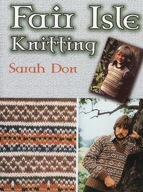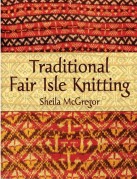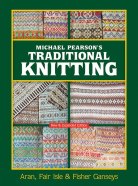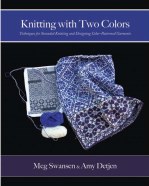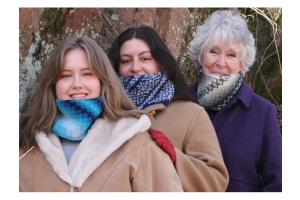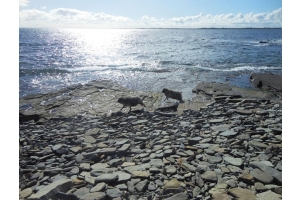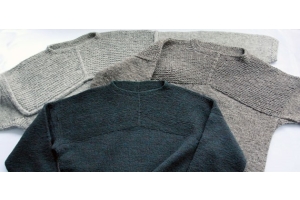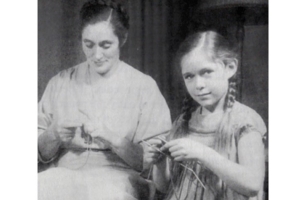Blog #10 Meg Swansen on Securing and Cutting Steeks
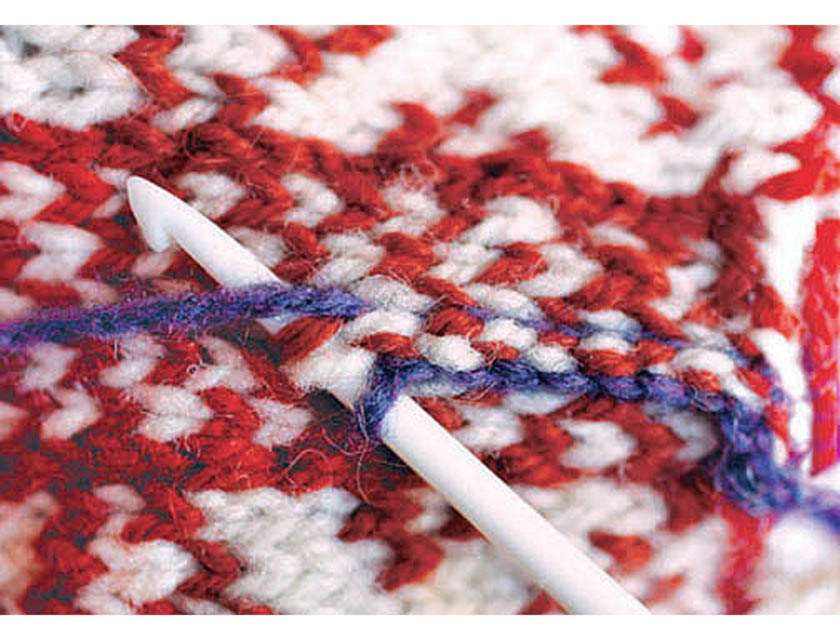
Securing and cutting steeks:
A steek may be defined as a group of extra stitches added to the circumference of a circular garment (though not part of its measurement), to provide a field for the future cutting of armholes, neck, and cardigan openings. Once cut, the stitches on each side of the cut automatically fold to the inside of the garment and form a facing.
The last video my husband Chris and I filmed together was a Fair Isle Vest design. Our DVD tracks me knitting the entire garment from start to finish, including the steeks. Since it was taped over 20 years ago, I machine-stitched the steeks to secure them; today I would have crocheted them.
I have written thoroughly about the Crocheted Steek in our book, Knitting with Two Colors, plus an extensive article in Vogue Knitting magazine.
All of my circular designs use steeks, and many of them are published in our semi-annual Wool Gathering booklets. However, the limited space precludes me from describing in detail how to secure and cut steeks in each issue of WG.
So, Cully and I made a brief video showing this proceedure - to which we can direct Wool Gathering readers who wish for visual illumination.
A bit of steek-background:
Before steeks, all our non-yoke sweaters were knitted entirely in the round, with the armholes, necks, and cardigan-fronts machine-stitched and cut open in the classic Norwegian manner.
Sarah Don was the first to write an entire book about knitting patterns from the Shetland Islands, with her 1979 Fair Isle Knitting, which we originally imported from the UK (still in print). Although she never mentioned the word, steek, she did describe the wrapped method (shown on the above video) by which one could knit the entire body in the round and cut the openings without first securing the stitches. However, the author herself did not care for that mode, so all instructions in the book are for a circular body to the underarm; then back and forth in pieces.
With the advent of the Don book, quite characteristically, Elizabeth Zimmermann plunged in and began to knit Fair Isle sweaters and vests, but utilized her own version of Don’s wrapped-method: she put underarm sts on a length of wool and cast on extra sts for future cutting. Her designs for three circular vests were published in March 1981: Wool Gathering #24.
Don’s book was followed by Sheila McGregor’s 1981 Traditional Fair Isle Knitting - (still in print) which we also imported from the UK. Although the word ‘steek’ was introduced here by McGregor, the details were sparse. The main strength of that book remains the over 900 Fair Isle pattern charts, arranged according to height; an invaluable resource for designers.
In 1984 we were given a bit more information through Michael Pearson’s, Traditional Knitting (still in print), but specifics were still absent. So, during those years, we kept producing steeked-and-machine-stitched sweaters, gradually improving our techniques as we went.
I am vague about the year, but several decades ago one of our Knitting Campers came up with a break-through variation to eliminate the necessity to machine stitch the steek. Instead, she worked single-crochet each side of the area to be cut. Luckily, another Camper (Amy Detjen) misunderstood the instructions, and instead of doing the thick obtrusive single-crochet, she worked a simpler, flat chain-stitch. Additional refinements were added by Janine Bajus (crocheting through the lower cast on, before heading up the side of the center steek stitch), and Katherine Misegades (weaving the raw steek sts together at the top of the armhole, to permit the crochet to continue, uninterrupted, up one side and down the other). As I mentioned above, I have written thoroughly about the Crocheted Steek in the Schoolhouse Press title, Knitting with Two Colors, plus an extensive article in Vogue Knitting magazine.
The progression of this technique is just one more example of knitting as a viable, flourishing, and persisting craft.
Onward, Meg
Bourgeois video and now yours, but neither actually shows it being sewn. Please advise. Thank you.
https://www.youtube.com/watch?v=PtR1bge32DY
Any suggestions would be greatly appreciated. I just ordered some Shetland from SHP for my next fair isle vest project and would like to improve upon my approach.

